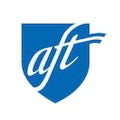Years in the classroom finally add up to student loan relief
Editor’s note: this article is available in Spanish: Click here.
When Alfredo Castro began his career as an educator, he was a paraprofessional in a Texas border town, where 95 percent of his students and their families were native Spanish speakers, and many of them were newcomers to the United States. In other words, they were a lot like him — a Mexican American who came to the U.S. when he was 5 years old, whose first language is Spanish, and whose roots in the Latino community run deep.
Castro went on to become a kindergarten teacher, and today he runs an after-school program at Corina Peña Elementary School in Peñitas, Texas, about six miles from the U.S.-Mexico border. He loves his job, helping children focus on academics but also providing “the fun stuff” that keeps them coming back: things like folklore, sports, arts and crafts. He especially likes seeing some of the children who were once in his kindergarten classes — children who are now in fourth and fifth grade.
But all this comes at a price. Until recently, Castro carried $45,000 in student debt.
Castro, who has been an educator for 15 years, says he never could have gotten the degrees he needed for his work without taking out student loans. And while he never expected to get rich in the classroom, he didn’t think it would carry such steep costs. Because of interest and penalties, the $20,000 he originally borrowed to finance his education eventually doubled to $45,000.
Castro, who has been an educator for 15 years, says he never could have gotten the degrees he needed for his work without taking out student loans.
He thought he might qualify for Public Service Loan Forgiveness, the federal program that relieves all student debt for people who work in public service — like paras and teachers — after they make 10 years’ worth of loan payments. But when he looked into it, somehow his payments didn’t qualify.
Then Castro joined the AFT through his local union, La Joya Federation of Teachers, and found out about Summer, the free member benefit that helps borrowers toward student debt relief. “I had a consultation with them and a one-on-one session,” he says. “I couldn’t believe that I could get forgiveness, but I still went through the process.”
It was worth the effort. After he uploaded his loan information and provided details about former and current employers, Summer went to work putting all the pieces together. In the end, Castro was able to erase $45,000 in debt. “It was a big relief,” he says now, still a bit incredulous that it happened.
In the end, Castro was able to erase $45,000 in debt.
Castro isn’t the only one who thought they’d never qualify for PSLF, only to find out they do. That’s because recent temporary changes to the program have eased requirements. For a limited time — until Oct. 31 — a waiver has expanded qualification to people who formerly had the “wrong” kinds of payments or “wrong” kinds of loans. The AFT’s free student debt clinics and webinars along with Summer are sorting out these details for thousands of AFT members, helping them join Castro in reaching student debt relief.
“I think it’s going to give a lot of hope to teachers,” says Castro.
Investing in communities
PSLF was originally designed to encourage young people considering jobs in public service. Everyone knows that these careers are far from get-rich-quick schemes; most people who choose to become teachers, school staff, public college professors, firefighters, EMTs, municipal clerks and other public service employees do so because they value the work and want to contribute to their communities. So giving them financial encouragement, like a break on their student loans, makes sense. For educators, who often need expensive graduate degrees to advance their careers, the PSLF program is especially important.
Castro, and many union members like him, fits the model of public service in many ways. For example, he understands the value of being a Latino man teaching young children: Research shows that children who have teachers and mentors who look like them and who share their family traditions and culture are more likely to thrive in school. Teachers like Castro can “identify with a student who comes from Mexico or many of the Hispanic countries,” says Castro. “We can identify with where they come from, the language, the culture, the food, all that.”
I’m not in education to make money. It’s more about the satisfaction of being of service to others and seeing my students grow.
Castro’s union work reflects his commitment to community as well: He has helped run the union’s Know Your Rights sessions, teaching immigrant families about how to navigate immigration law and protect their loved ones from deportation. He is a member of his union’s executive board and works hard to advocate for teachers.
“I’m not in education to make money,” says Castro, who says he lives a relatively simple life without lavish vacations or expensive habits. “It’s more about the satisfaction of being of service to others and seeing my students grow.”
The recent good news about his student debt has encouraged him to continue that work, and maybe pursue his dream of becoming a school principal. “I want to continue my lifelong learning pathway.”
For more information on how to get student debt relief, see the following:
· A recording of the student debt webinar, in Spanish
· The AFT’s Spanish language guide to student debt relief
· AFT Spanish language student debt clinics brochure
· Questions and answers from the federal government about PSLF, in Spanish
This story was written by AFT communications specialist Virginia Myers. Want to see more stories like this? Subscribe to AFT e-newsletters.
